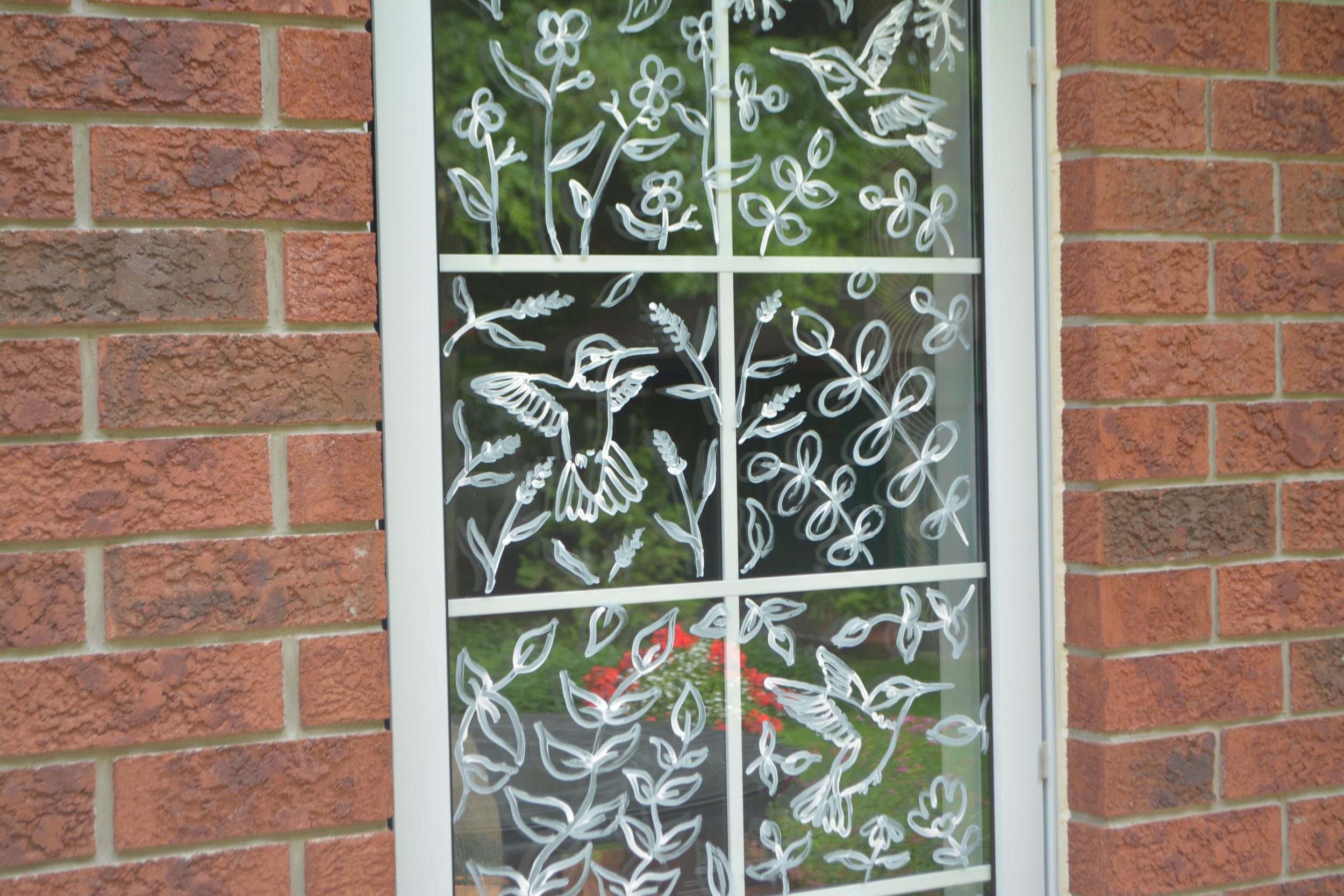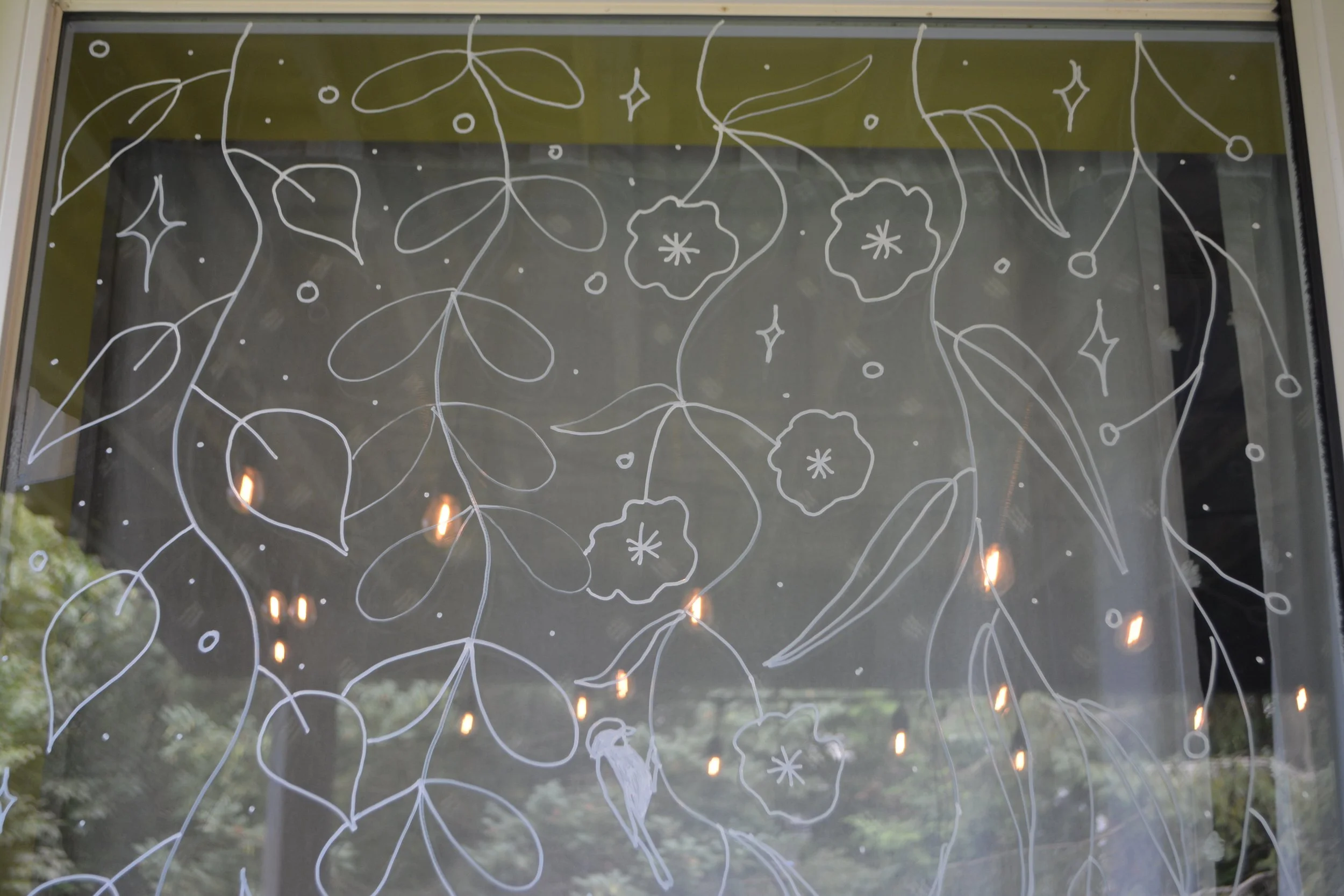An Artistic Way to Make Buildings Safer for Birds this Fall Migration and Beyond
Photo Credit: Lisa Horn / FLAP Canada
The leaves are falling from the trees all around us, and most migratory birds have already left the Kawartha Lakes Region to head south for the winter months. These incredible journeys are inherently filled with danger. From dodging outdoor cats to navigating a noisy and brightly-lit landscape, young and old birds alike have a lot of human-made obstacles between their summer homes and wintering grounds. One of the most prominent features of the built environment that makes migration so dangerous for birds is something we encounter in our lives everyday. According to the Fatal Light Awareness Program (FLAP), an estimated 25 million birds die from collisions with buildings in Canada each year, and in the United States that number could be closer to a billion. This means building collisions, also described more specifically as window strikes, are one of the most significant dangers that birds experience during migration season. The reflective surfaces of windows on all buildings, from a small lakeside cottage to the glass towers of downtown highrises, can be a confusing reflective labyrinth that disrupts bird navigation, especially with rain and fog added to the mix. Many birds that begin their migration from our own backyards never make it to their southern destinations.
While this issue is daunting, hope lies in the work being done by organizations like FLAP Canada that are pushing to make positive change as they document and study building collisions, educate the public about what’s going on, and advocate for long-term solutions and change like making bird-safe materials and designs a part of Ontario’s building code standards. There are also ways that you, dear reader, can make positive change to your own built environments at home, at work, and at the cottage! There are types of window design, like frosted glass, that can stop collisions right from their installation, but other methods can be added to existing windows too, like window grilles, privacy film, or Feather-Friendly tape. For a full list of methods to mitigate window strikes and more, be sure to check out FLAP’s website here. In honour of the fantastic submissions we’ve been receiving for our Annual Juried Exhibit, Radical Feathers, in this blog we will provide some ideas and important things to remember for adding your own creative, inexpensive DIY flair to preventing collisions and protecting birds in your own neighbourhood.
Photo Credit: Lisa Horn / FLAP Canada
It’s easy to create a beautiful bird-safe window display with a bit of vision and some inexpensive everyday supplies. For a temporary design, you can even use a bar of soap to draw with, though this will need to be re-applied if the soap washes off in wet weather. Tempera or acrylic paints mixed with a couple drops of dish soap are great materials for a design that will stand up a bit longer to the elements, and can be washed off for a fresh display with vinegar and water and a little bit of elbow grease. Oil-based paint markers are also perfect, especially if you prefer to draw your design instead of painting it.
Once you pick your medium, it’s time to create your design. Repeating patterns like flowers, leaves and vines can add a touch of a garden feel to your windows. Lines, dots, and swirls can provide an abstract look that can fit any aesthetic with a bit more subtlety. For the artistically ambitious, the sky's the limit - murals with different animals, plants, birds, and more can be an art piece unto themselves that will stand out - both to the birds that will be able to avoid collisions, and to any admirers on your street! When deciding on your design, it’s important to remember a few key elements that will make your window bird-safe. All you need to do is remember your SHADOW:
S - Size matters! All elements, especially if you are using dots and lines, need to be at least 6mm in diameter to be visible.
H - High-contrast! The artwork must stand out! White is the most common colour used to contrast with the often dark colour of the glass, but other bright colours could be used too.
A - Any shape is great! It doesn’t have to be shaped like a bird of prey decal - those were popular in the early days of bird-strike prevention, but now we know that the elements mentioned here are more important than the shape of the design. Let your artistic vision loose!
D - Dense! The artwork needs to be close together. Gaps of more than 5cm (2 inches) are big enough for birds to see a through-way, so be sure to fill in any gaps with more design work.
O - Outside! The reflective surface of the glass is the exterior of your window, and that is what reflects light and causes confusion. Be sure that any artwork is on the outside of the window for it to work its magic.
W - Whole window! The artwork needs to cover the entire reflective surface for it to work properly. Much like the size of the elements and density, the entire surface must be covered in your artwork. Gaps that you can see are gaps that birds can see too!
Kawartha Art Gallery’s latest annual juried exhibit, Radical Feathers, opens Tuesday November 14, with a special Awards Reception taking place Saturday, November 18 at 7pm (doors 6:30pm). Click here to find out more and reserve tickets!


